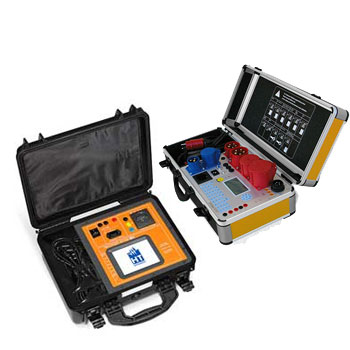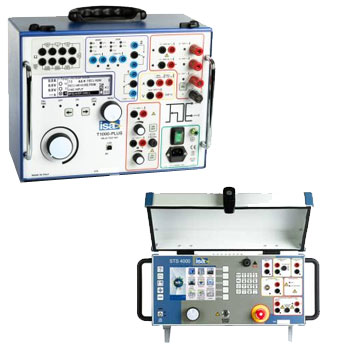
Ambient temperature plays a crucial role in measurements across various industrial and scientific applications. Temperature measurements, pressure measurement methods, and humidity measurement methods are particularly affected, as they are sensitive to temperature fluctuations. This article provides a detailed examination of the impact of ambient temperatures on these measurement techniques and discusses methods to minimize sources of error.
Temperature Measurements and Their Dependence on Ambient Temperature
Basics of Temperature Measurement
Temperature measurements are used in numerous applications, ranging from industrial processes to environmental monitoring. The most common methods are:
-
Resistance Thermometers (PT100, PT1000)
-
Thermocouples (Type K, Type J, Type T, etc.)
-
Infrared Thermometers
-
Liquid Thermometers
Influence of Ambient Temperature on Temperature Measurements
Ambient temperature can affect temperature measurements in several ways:
-
Self-heating of sensors: In resistance thermometers, electrical current flow can cause self-heating, especially when the ambient temperature deviates significantly from the target temperature.
-
Radiation losses: Infrared thermometers can be affected by ambient temperatures if surrounding thermal radiation interferes with the measurement.
-
Measurement drift in thermocouples: High ambient temperatures can cause thermocouples to drift, especially when exposed to prolonged thermal loads.
Methods for Error Prevention
-
Use of temperature compensation in measurement systems
-
Insulation of sensors against unwanted heat sources
-
Calibration of sensors under operating conditions
Pressure Measurement Methods and Temperature Influences
Basics of Pressure Measurement
Pressure measurements are essential in industries such as process engineering, chemistry, and automotive technology. The main methods include:
-
Manometers (mechanical, electrical)
-
Pressure sensors with piezoelectric elements
-
Capacitive and inductive pressure gauges
Influence of Ambient Temperature on Pressure Measurements
Temperature changes affect pressure measurement methods through various physical effects:
-
Thermal influence on pressure sensors: Materials expand at increasing temperatures, altering measurement behavior.
-
Gas expansion according to the ideal gas law: If gases remain at a constant volume, the pressure changes according to the formula:
-
Drift in piezoelectric pressure sensors: Piezoelectric materials are sensitive to temperature variations and may provide incorrect values.
Measures for Error Reduction
-
Temperature compensation via electronic circuits
-
Thermal insulation of pressure sensors
-
Use of pressure transmitters with temperature-stabilized reference systems
Humidity Measurement Methods and Temperature Influences
Basics of Humidity Measurement
Humidity measurements are used to control air humidity in climate systems, the food industry, and laboratory environments. The most common methods include:
-
Capacitive Humidity Sensors
-
Psychrometers (Dry and Wet Thermometers)
-
Dew Point Mirror Hygrometers
-
Gravimetric Humidity Measurement
Influence of Ambient Temperature on Humidity Measurements
The measurement of relative humidity is highly dependent on temperature, as warm air can hold more moisture than cold air. The key temperature effects include:
-
Moisture dependence of capacitance change: Capacitive humidity sensors are sensitive to temperature changes because the dielectric constant of the measurement materials is temperature-dependent.
-
Dew point shift: A temperature change leads to a shift in the dew point, causing hygrometers to produce incorrect values.
-
Condensation effects: Sudden temperature changes can lead to condensation, affecting the accuracy of humidity sensors.
Methods for Error Prevention
-
Temperature compensation in humidity sensors
-
Use of dew point mirror hygrometers for high-precision measurements
-
Insulation of sensors against external temperature influences
Tables for Illustration
Table 1: Influence Factors of Ambient Temperature on Various Measurement Methods
| Measurement Method | Influence of Ambient Temperature | Measures to Reduce Influence |
|---|---|---|
| Resistance Thermometers | Self-heating | Low measurement currents, calibration |
| Thermocouples | Drift due to material changes | Regular calibration |
| Infrared Thermometers | Radiation influences | Shielding against ambient temperature |
| Piezoelectric Sensors | Material expansion | Temperature compensation |
| Capacitive Humidity Sensors | Change in dielectric constant | Sensors with temperature compensation |
Table 2: Comparison of Measurement Methods under Temperature Influences
| Measurement Method | Accuracy under Temperature Changes | Recommended Application Areas |
| Thermocouples | Medium | Industry, Mechanical Engineering |
| PT100 Resistance Thermometers | High | Laboratory Measurements, Environmental Technology |
| Capacitive Humidity Sensors | Medium | Building and Climate Control |
| Dew Point Hygrometers | Very High | Meteorology, Pharmaceutical Industry |
| Piezoelectric Pressure Sensors | Medium | Automotive and Aerospace Technology |
Conclusion
Ambient temperature has a significant impact on temperature, pressure, and humidity measurements. Through appropriate compensation measures and the use of temperature-stabilized sensors, measurement errors can be minimized, leading to more reliable results. Careful selection of the measurement method and regular calibration are essential for precise measurements in different environments.











































































































































































